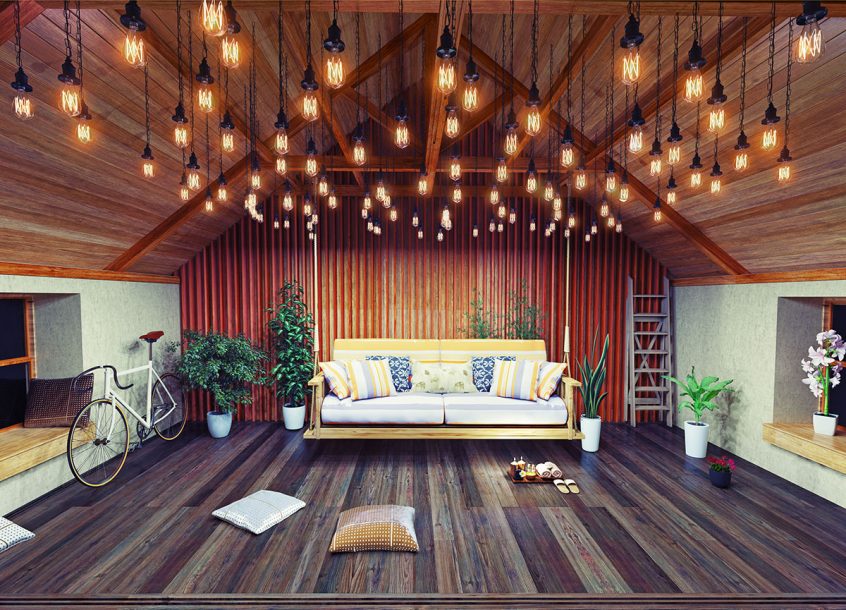A great way of increasing residential space for a growing family, turning an attic into residential space can also be a good opportunity to reduce your heating costs once and for all.
If you already live in an attic apartment or in a family home with an utilized attic, you will agree that attic apartments are by far the most beautiful residential space. Unfortunately, much too often they may also be the most unpleasant. Especially if they are not sufficiently and properly insulated.
The low comfort level is quickly felt and never enjoyed. In winter, it is impossible to adequately heat it. In summer, the temperature below the roof is significantly higher than on lower floors. On top of it, in windy weather the air temperature fluctuates rather rapidly. Without monitoring our fuel consumption, we notice that a large part of heat is wasted.
Did you know that because of inadequate roof thermal insulation, you will waste as much as 30% of generated heat? This means that your heating costs will be considerably higher.
What is the reason why? The answer is simple. Pitched roofs are, due to their large surface area, in greater contact with the outside temperature. As pitched roofs are usually multilayered prefabricated – that is, composed of different layers and materials -, this may easily lead to problems. If the composition is inappropriate, if not all necessary layers with appropriate properties are installed, or, finally, due to poor execution, attics will overheat in summer and, in winter, cool faster than other rooms.
If our roof is a concrete slab and we insulate it from the interiour, or below, side, it will act as an additional heating eIement in summer, and as a cooling body in winter.
Execution is not the only one to blame. Under our roofs, we often shelter other residents, such as mice or minks. Enjoying their comfortable stay in woollen thermal insulation, they can do a lot of damage resulting in thermal bridges and, finally, in poor energy efficiency. You should be aware of these facts even if you are only starting to turn your unutilized attic into residential space.
Thermal insulation and its role in achieving a high comfort level of your attic apartment
If you are considering turning your unutilized attic into new residential space, or even just looking for ways to renovate your attic, you are be well advised to observe a simple advice: in a construction job, never underestimate the crucial role of accuracy and prudence.
Come early summer, you are probably not keen on having to use air conditioning to cool the overheated premises? Nor do you want to turn the thermostat to maximum in winter because you cannot heat your apartment to adequate temperature levels?
Pitched roofs require an appropriate layer of thermal protection, illustrated with a warm blanket. If placed in with our skin, the blanket will provide warmth. But when lifted from our body, cold air seeps between the blanket and our skin, causing us to feel cold. We have a similar experience falling asleep in the windy outdoors. We feel the cold at the slightest breeze, regretting that, instead of the blanket, we did not choose a windstopping material or sleep in a sleeping bag.
Buildings behave in similar ways. If the roof is not adequately protected, heat will rapidly flow in both ways, and the space below will overheat or turn cold much faster than expected.
Simple steps to renovate your attic and turn it into a cosy apartment
A roof repair can be carried out in a number of different methods. In order to pick the appropriate one, we should, before we start, carefully check the following:
- did we include all the necessary protective layers?
- what is their respective thickness?
- is their sequence correct?
- is the material adequate, is the method appropriate and the execution properly planned?
The necessary measures are carried out depending on the state of the roof. If a complete overhaul is called for, rules applying to new construction should be observed. However, if the roofing is not worn out and still offers protection from environmental influences, choosing the appropriate materials we may decide to insulate the interior space, involving no major construction work.
As the thermal insulation panels are fixed onto existing interior walls, we are left with the option of gradual, step by step, renovation, which comes handy if the work is performed in a room that we currently live in. Also, as the job is performed within the premises, we are not limited by weather conditions.
Internal wall insulation is a good solution. At our own convenience and at low cost, we may significantly improve the comfort level of living in the attic. In this way, the attic can be turned into a residential space of equal energy-efficiency as space on thermally insulated lower floors. This will not only show in lower heating cost, but will, finally, bring us closer to our dream of a cosy attic space.
A more thorough renovation can be achieved with a total roof overhaul. Read here how to do this.

 +386 7 39 39 510
+386 7 39 39 510 advice@energyshield.biz
advice@energyshield.biz

